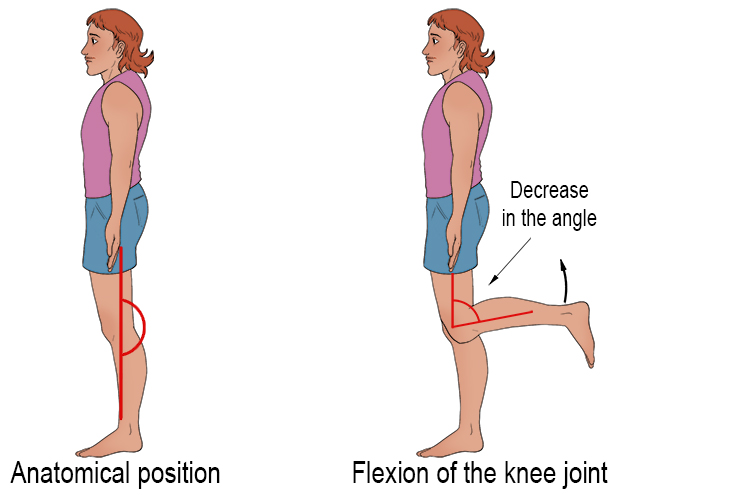Always Stabilize An Injured Knee In Which Position

When someone suffers a knee injury, immediate and appropriate stabilization is crucial to prevent further damage. But a critical question often arises: In which position should an injured knee be stabilized?
The answer isn't always straightforward and depends on the nature and severity of the injury. Understanding the principles behind knee stabilization and the importance of professional medical evaluation is paramount.
The Importance of Knee Stabilization
Stabilizing an injured knee aims to prevent further movement that could exacerbate the initial injury. This includes minimizing pain, reducing the risk of additional tissue damage (ligaments, tendons, cartilage), and preparing the injured individual for safe transport to medical care.
According to the American Academy of Orthopaedic Surgeons (AAOS), improper handling of a knee injury can lead to increased bleeding, swelling, and potentially long-term complications.
General Guidelines: Position Matters
While professional medical evaluation is essential, here are some general guidelines for stabilizing an injured knee:
- Position of Comfort: If possible, stabilize the knee in the position the injured person finds most comfortable. This minimizes pain and muscle spasms.
- Straight or Slightly Bent: Generally, a slightly bent position (around 15-30 degrees of flexion) is preferable to full extension, especially if the knee is painful to straighten.
- Avoid Forcing Movement: Never force the knee into a straight position if it causes significant pain or resistance. This could indicate a severe injury, such as a ligament tear or fracture.
These are general recommendations and not meant to replace professional medical advice.
When to Suspect Specific Injuries
Specific injuries may warrant particular attention to the stabilization process.
A suspected dislocation, where the bones of the knee joint are out of alignment, requires immediate medical attention. Splint the knee in the position found and do not attempt to reduce the dislocation yourself. According to the National Institutes of Health (NIH), attempting to relocate a dislocated knee without proper medical training can cause severe nerve and blood vessel damage.
If a fracture is suspected (indicated by significant pain, deformity, or inability to bear weight), immobilize the knee as much as possible in the position found, using splints, pillows, or other available materials.
For suspected ligament injuries (e.g., ACL, MCL tears), stabilizing the knee in a slightly bent position can help to reduce stress on the injured ligaments.
How to Stabilize: Practical Steps
Here's a step-by-step guide to stabilizing an injured knee, based on recommendations from the Red Cross:
- Assess the Situation: Quickly evaluate the injured person's overall condition. Check for other injuries and ensure their airway, breathing, and circulation are intact.
- Immobilize the Knee: Use a splint (commercial or improvised) to prevent movement. A rolled-up blanket, pillows, or cardboard can serve as makeshift splints.
- Padding: Place padding between the splint and the knee to provide comfort and prevent pressure sores.
- Secure the Splint: Use bandages, tape, or cloth to secure the splint above and below the knee joint. Ensure the bandages are snug but not so tight that they cut off circulation. Check for pulse, warmth and color distal to the injury.
- Elevate the Leg: If possible, elevate the injured leg to help reduce swelling.
- Monitor and Reassess: Continuously monitor the injured person for any changes in their condition. Reassess circulation frequently.
Remember, the goal is to minimize movement until professional medical help arrives.
The Role of Professional Medical Evaluation
Following initial stabilization, prompt professional medical evaluation is critical.
A doctor or other qualified healthcare professional can accurately diagnose the specific injury, determine the appropriate treatment plan (which may include physical therapy, medication, or surgery), and provide guidance on rehabilitation.
Self-treating a knee injury without proper diagnosis can lead to chronic pain, instability, and further joint damage. The AAOS emphasizes the importance of early diagnosis and treatment to optimize long-term outcomes.
A Human Perspective: The Impact of Proper Care
Consider the story of Sarah Jones, a high school soccer player who suffered a knee injury during a game. Thanks to the quick thinking of the athletic trainer, her knee was immediately stabilized in a slightly bent position, minimizing further damage.
After a thorough medical evaluation, she received appropriate treatment and rehabilitation. Sarah was able to return to the soccer field, stronger and more confident than before. Her story underscores the importance of proper initial care in ensuring a successful recovery.
Conclusion: Prioritizing Stability and Professional Care
Stabilizing an injured knee in the correct position is a critical first step in managing these common injuries. While guidelines exist, prioritizing comfort and avoiding forced movements are key principles.
The ultimate goal is to minimize further damage and prepare the individual for prompt professional medical evaluation and treatment. Remember, early and appropriate care can significantly impact the long-term outcome and quality of life for individuals with knee injuries.


















